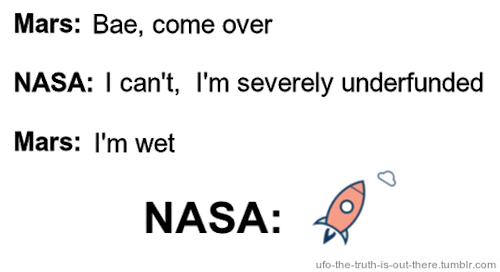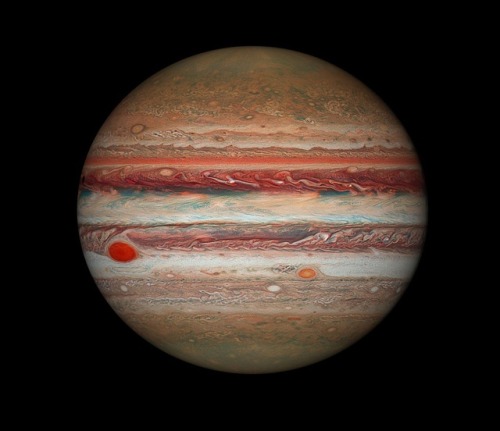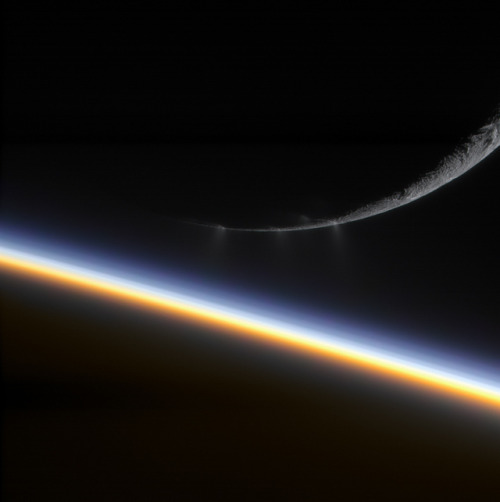Chemistry/Physics: Even More Smoke Tricks


Chemistry/Physics: Even more smoke tricks
Source
More Posts from Riekod and Others


“The most powerful determinant of whether a woman goes on in science might be whether anyone encourages her to go on. My freshman year at Yale, I earned a 32 on my first physics midterm. My parents urged me to switch majors. All they wanted was that I be able to earn a living until I married a man who could support me, and physics seemed unlikely to accomplish either goal. I trudged up Science Hill to ask my professor, Michael Zeller, to sign my withdrawal slip. I took the elevator to Professor Zeller’s floor, then navigated corridors lined with photos of the all-male faculty and notices for lectures whose titles struck me as incomprehensible. I knocked at my professor’s door and managed to stammer that I had gotten a 32 on the midterm and needed him to sign my drop slip. “Why?” he asked. He received D’s in two of his physics courses. Not on the midterms — in the courses. The story sounded like something a nice professor would invent to make his least talented student feel less dumb. In his case, the D’s clearly were aberrations. In my case, the 32 signified that I wasn’t any good at physics. “Just swim in your own lane,” he said. Seeing my confusion, he told me that he had been on the swimming team at Stanford. His stroke was as good as anyone’s. But he kept coming in second. “Zeller,” the coach said, “your problem is you keep looking around to see how the other guys are doing. Keep your eyes on your own lane, swim your fastest and you’ll win.” I gathered this meant he wouldn’t be signing my drop slip. “You can do it,” he said. “Stick it out.” I stayed in the course. Week after week, I struggled to do my problem sets, until they no longer seemed impenetrable. The deeper I now tunnel into my four-inch-thick freshman physics textbook, the more equations I find festooned with comet-like exclamation points and theorems whose beauty I noted with exploding novas of hot-pink asterisks. The markings in the book return me to a time when, sitting in my cramped dorm room, I suddenly grasped some principle that governs the way objects interact, whether here on earth or light years distant, and I marveled that such vastness and complexity could be reducible to the equation I had highlighted in my book. Could anything have been more thrilling than comprehending an entirely new way of seeing, a reality more real than the real itself? I earned a B in the course; the next semester I got an A. By the start of my senior year, I was at the top of my class, with the most experience conducting research. But not a single professor asked me if I was going on to graduate school. When I mentioned shyly to Professor Zeller that my dream was to apply to Princeton and become a theoretician, he shook his head and said that if you went to Princeton, you had better put your ego in your back pocket, because those guys were so brilliant and competitive that you would get that ego crushed, which made me feel as if I weren’t brilliant or competitive enough to apply. Not even the math professor who supervised my senior thesis urged me to go on for a Ph.D. I had spent nine months missing parties, skipping dinners and losing sleep, trying to figure out why waves — of sound, of light, of anything — travel in a spherical shell, like the skin of a balloon, in any odd-dimensional space, but like a solid bowling ball in any space of even dimension. When at last I found the answer, I knocked triumphantly at my adviser’s door. Yet I don’t remember him praising me in any way. I was dying to ask if my ability to solve the problem meant that I was good enough to make it as a theoretical physicist. But I knew that if I needed to ask, I wasn’t.”
— Eileen Pollack (via logicandgrace)

Hubble’s Jupiter and the Shrinking Great Red Spot
Image Credit: NASA, ESA, Hubble, OPAL Program, STScI; Processing: Karol Masztalerz

If you dropped a water balloon on a bed of nails, you’d expect it to burst spectacularly. And you’d be right – some of the time. Under the right conditions, though, you’d see what a high-speed camera caught in the animation above: a pancake-shaped bounce with nary a leak. Physically, this is a scaled-up version of what happens to a water droplet when it hits a superhydrophobic surface.
Water repellent superhydrophobic surfaces are covered in microscale roughness, much like a bed of tiny nails. When the balloon (or droplet) hits, it deforms into the gaps between posts. In the case of the water balloon, its rubbery exterior pulls back against that deformation. (For the droplet, the same effect is provided by surface tension.) That tension pulls the deformed parts of the balloon back up, causing the whole balloon to rebound off the nails in a pancake-like shape. For more, check out this video on the student balloon project or the original water droplet research. (Image credits: T. Hecksher et al., Y. Liu et al.; via The New York Times; submitted by Justin B.)



Omega Centauri.
Credit: Maicon Germiniani
Studying physics is essentially being taught a simple structure, and then told ”actually, scratch that, the truth is actually far more complicated” over and over again until we reach the point where we still don’t know the truth, only that we do not have it.

Enceladus and Saturn
Image credit: Gordan Ugarkovic
Gamma-ray Bursts: Black Hole Birth Announcements
Gamma-ray bursts are the brightest, most violent explosions in the universe, but they can be surprisingly tricky to detect. Our eyes can’t see them because they are tuned to just a limited portion of the types of light that exist, but thanks to technology, we can even see the highest-energy form of light in the cosmos — gamma rays.
So how did we discover gamma-ray bursts?
Accidentally!

We didn’t actually develop gamma-ray detectors to peer at the universe — we were keeping an eye on our neighbors! During the Cold War, the United States and the former Soviet Union both signed the Nuclear Test Ban Treaty of 1963 that stated neither nation would test nuclear weapons in space. Just one week later, the US launched the first Vela satellite to ensure the treaty wasn’t being violated. What they saw instead were gamma-ray events happening out in the cosmos!

Things Going Bump in the Cosmos
Each of these gamma-ray events, dubbed “gamma-ray bursts” or GRBs, lasted such a short time that information was very difficult to gather. For decades their origins, locations and causes remained a cosmic mystery, but in recent years we’ve been able to figure out a lot about GRBs. They come in two flavors: short-duration (less than two seconds) and long-duration (two seconds or more). Short and long bursts seem to be caused by different cosmic events, but the end result is thought to be the birth of a black hole.

Short GRBs are created by binary neutron star mergers. Neutron stars are the superdense leftover cores of really massive stars that have gone supernova. When two of them crash together (long after they’ve gone supernova) the collision releases a spectacular amount of energy before producing a black hole. Astronomers suspect something similar may occur in a merger between a neutron star and an already-existing black hole.

Long GRBs account for most of the bursts we see and can be created when an extremely massive star goes supernova and launches jets of material at nearly the speed of light (though not every supernova will produce a GRB). They can last just a few seconds or several minutes, though some extremely long GRBs have been known to last for hours!

A Gamma-Ray Burst a Day Sends Waves of Light Our Way!
Our Fermi Gamma-ray Space Telescope detects a GRB nearly every day, but there are actually many more happening — we just can’t see them! In a GRB, the gamma rays are shot out in a narrow beam. We have to be lined up just right in order to detect them, because not all bursts are beamed toward us — when we see one it’s because we’re looking right down the barrel of the gamma-ray gun. Scientists estimate that there are at least 50 times more GRBs happening each day than we detect!

So what’s left after a GRB — just a solitary black hole? Since GRBs usually last only a matter of seconds, it’s very difficult to study them in-depth. Fortunately, each one leaves an afterglow that can last for hours or even years in extreme cases. Afterglows are created when the GRB jets run into material surrounding the star. Because that material slows the jets down, we see lower-energy light, like X-rays and radio waves, that can take a while to fade. Afterglows are so important in helping us understand more about GRBs that our Neil Gehrels Swift Observatory was specifically designed to study them!

Last fall, we had the opportunity to learn even more from a gamma-ray burst than usual! From 130 million light-years away, Fermi witnessed a pair of neutron stars collide, creating a spectacular short GRB. What made this burst extra special was the fact that ground-based gravitational wave detectors LIGO and Virgo caught the same event, linking light and gravitational waves to the same source for the first time ever!

For over 10 years now, Fermi has been exploring the gamma-ray universe. Thanks to Fermi, scientists are learning more about the fundamental physics of the cosmos, from dark matter to the nature of space-time and beyond. Discover more about how we’ll be celebrating Fermi’s achievements all year!
Make sure to follow us on Tumblr for your regular dose of space: http://nasa.tumblr.com
-
 aesthetical-mess reblogged this · 2 months ago
aesthetical-mess reblogged this · 2 months ago -
 dan-crimes liked this · 2 months ago
dan-crimes liked this · 2 months ago -
 eightstims reblogged this · 11 months ago
eightstims reblogged this · 11 months ago -
 noisereductions liked this · 1 year ago
noisereductions liked this · 1 year ago -
 squuote liked this · 1 year ago
squuote liked this · 1 year ago -
 crystalline-breath reblogged this · 1 year ago
crystalline-breath reblogged this · 1 year ago -
 age-age-again reblogged this · 1 year ago
age-age-again reblogged this · 1 year ago -
 achromaticlovers reblogged this · 1 year ago
achromaticlovers reblogged this · 1 year ago -
 wikipediaboyf liked this · 1 year ago
wikipediaboyf liked this · 1 year ago -
 skunkstripe liked this · 1 year ago
skunkstripe liked this · 1 year ago -
 chirpsy reblogged this · 2 years ago
chirpsy reblogged this · 2 years ago -
 trans-dwightschrute liked this · 2 years ago
trans-dwightschrute liked this · 2 years ago -
 bringingdapperback liked this · 2 years ago
bringingdapperback liked this · 2 years ago -
 kneltnotbowed reblogged this · 2 years ago
kneltnotbowed reblogged this · 2 years ago -
 sciencerule-z-again liked this · 2 years ago
sciencerule-z-again liked this · 2 years ago -
 sworcerie liked this · 2 years ago
sworcerie liked this · 2 years ago -
 paperclvps reblogged this · 2 years ago
paperclvps reblogged this · 2 years ago -
 la-locaconfudida reblogged this · 2 years ago
la-locaconfudida reblogged this · 2 years ago -
 la-locaconfudida liked this · 2 years ago
la-locaconfudida liked this · 2 years ago -
 fintan-pyren liked this · 2 years ago
fintan-pyren liked this · 2 years ago -
 green-eyed-gemini liked this · 2 years ago
green-eyed-gemini liked this · 2 years ago -
 percycoolguy liked this · 3 years ago
percycoolguy liked this · 3 years ago -
 glimmerstuff reblogged this · 3 years ago
glimmerstuff reblogged this · 3 years ago -
 sst1ml0g reblogged this · 3 years ago
sst1ml0g reblogged this · 3 years ago -
 elliott-seed liked this · 3 years ago
elliott-seed liked this · 3 years ago -
 naptimeclown liked this · 3 years ago
naptimeclown liked this · 3 years ago -
 spacebugarts liked this · 3 years ago
spacebugarts liked this · 3 years ago -
 fightingtrim liked this · 3 years ago
fightingtrim liked this · 3 years ago -
 rebel4luvgrace liked this · 3 years ago
rebel4luvgrace liked this · 3 years ago -
 space-breeze liked this · 3 years ago
space-breeze liked this · 3 years ago -
 space-breeze reblogged this · 3 years ago
space-breeze reblogged this · 3 years ago -
 chirpsy reblogged this · 3 years ago
chirpsy reblogged this · 3 years ago -
 faemytho liked this · 3 years ago
faemytho liked this · 3 years ago -
 jawbone-xylophone reblogged this · 3 years ago
jawbone-xylophone reblogged this · 3 years ago -
 evan--myers liked this · 3 years ago
evan--myers liked this · 3 years ago -
 lil-q-tea-pie reblogged this · 3 years ago
lil-q-tea-pie reblogged this · 3 years ago -
 eldritchhousekeeper liked this · 3 years ago
eldritchhousekeeper liked this · 3 years ago -
 goobis reblogged this · 3 years ago
goobis reblogged this · 3 years ago